Viva Mexico! Paris is magnificent but Mexico is so great!
Luis Buñuel, in a letter to Gabriel Figueroa
Luis Buñuel (Calanda, Spain, 1900-Mexico City, 1983) had his first encounter with surrealism in Paris, where he served as a critic, poet and filmmaker. There he filmed, in collaboration with Salvador Dalí, the film that would become the most important reference of surrealist cinema: An Andalusian Dog (1929).
The Spanish civil war and chance brought him to Mexico in 1936, where he reached the brightest moment of his career.
Buñuel became a Mexican citizen in 1949and filmed in Mexico a total of 17 films —most of his work—, among which are This Strange Passion (1953), Nazarin (1959), Viridiana (1961) and The Exterminating Angel (1962) —considered his most mature works— and others of a commercial nature including The Great Madcap (1949), Susana (1951) and The Criminal Life of Archibaldo de la Cruz (1955).
The Young and the Damned (1950) was his first masterpiece filmed in this country. In 1951 it premiered at the Cannes Film Festival, overshadowed by an aura of criticism stemmed from focusing on Mexico City’s slums, while ignoring the portrait that the director and the cinematographer Gabriel Figueroa tried to achieve. Almost seven decades later, in 2019, The Young and the Damned was re-released with ovations in Cannes as a sample of its aesthetic value and its validity.
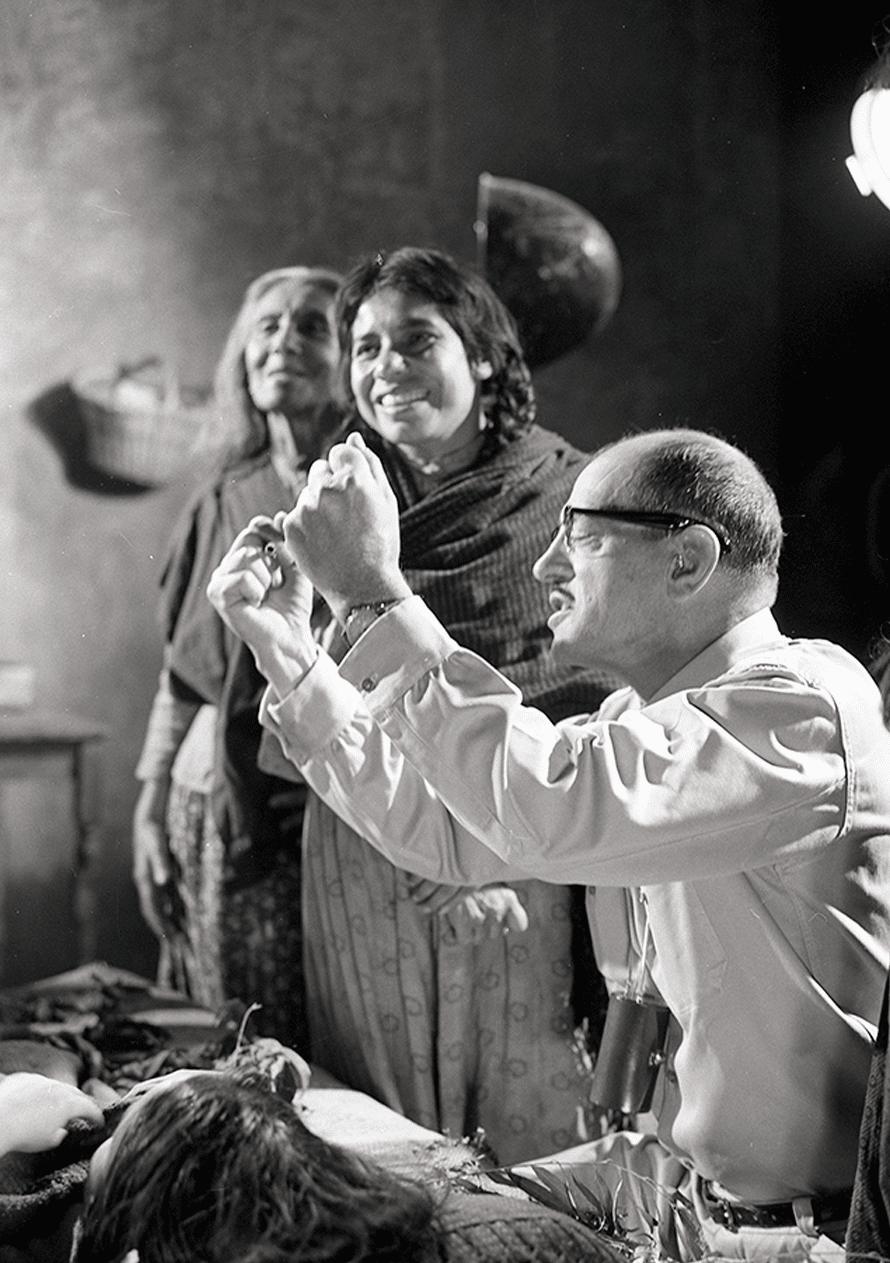
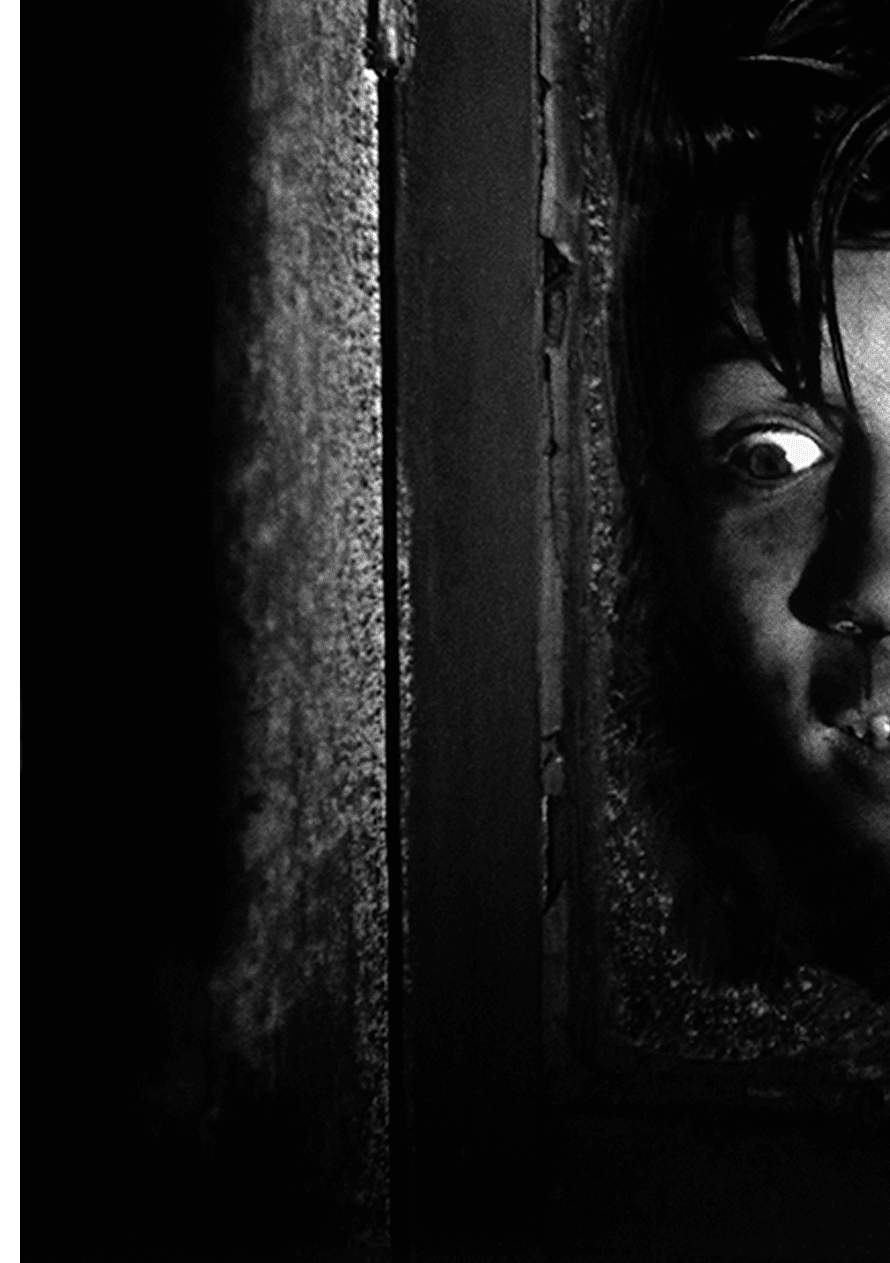
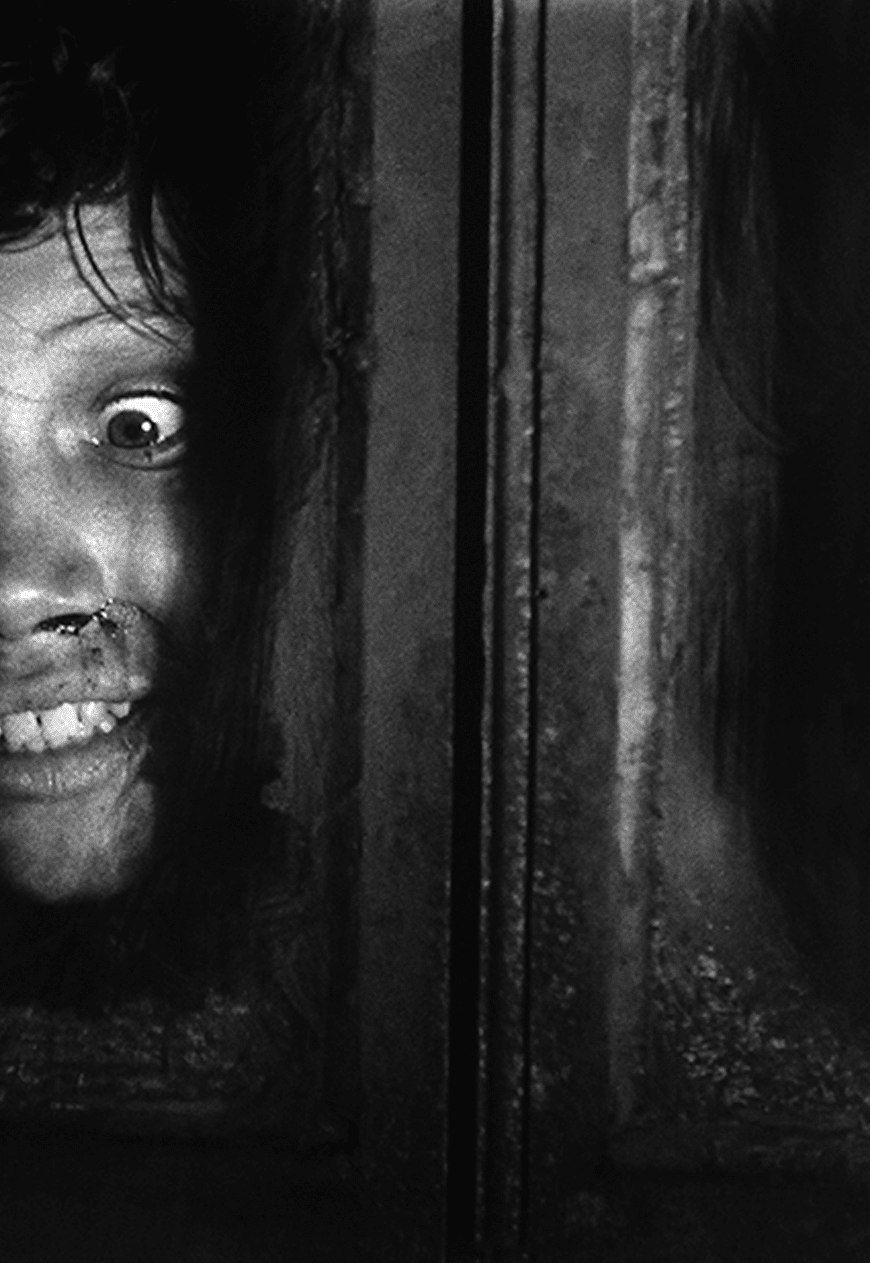
Eugenio Caballero (Mexico City, 1972) has built a reputation as one of the most important production designers worldwide. With over twenty years of experience, he has been responsible for the production design, set decoration and art direction of an endless number of film worlds.
Caballero explains that art design is not a discipline that limits itself to the world of aesthetics, but belongs to the field of narrative, to the emotional interpretation of scripts through color, volume and texture to convey to the viewer an idea or an emotion.
At age 17 he began his studies in Art History and Film History at the University of Florence. In Mexico, he began his film career alongside production designer Brigitte Brosch in film Romeo + Juliet, directed by Baz Luhrmann in 1996. Since then, he has collaborated in over twenty feature films, including Pan’s Labyrinth (Guillermo del Toro, 2006), The Impossible (J. A. Bayona, 2012), and Roma (Alfonso Cuarón, 2018).
Over the years, his work has received recognition with several awards, among which are an Academy Award for Best Achievement in Art Direction for Pan’s Labyrinth —shared with Pilar Revuelta—, two Ariel Awards for Best Art Direction and Best Set Design, and an Art Directors Guild Award.

Either we act like gentlemen or like what we are.
Cantinflas
Cantinflas is one of the most iconic comic characters in national cinema. Portrayed by Mario Moreno Reyes (Mexico City, 1911-1993), this cheeky clown was born at the beginning of the 1930s, on the stage of the Carpa Mayab Theater. The actor made his appearance wearing sagging pants halfway to his butt, a wrinkled hat, a tattered white T-shirt, an old waistcoat which he referred to as a “raincoat”, a washcloth on his shoulder and other rags..., suspiciously similar to Chupamirto’s outfit, a Mexican cartoon character created by cartoonist Jesús Acosta. Legend has it that the name came up when, half-way through the show, someone yelled at the actor: “How much do you inflate (drink)?”, to know if his nervous and unintelligible speech was related to his alcoholic state.
Cantinflas successfully moved on from one marquee to another, performing an act in company of Valentina Ivanova —the actor’s wife— and Estanislao Schilinsky —his brother-in-law— until they made it to film.
In 1940 he filmed the movie that made him famous: You’re Missing the Point. He shot over 39 films, among which Around the World in 80 Days (1956) stands out, earning him a Golden Globe in the category of Best Comedy Actor and becoming at the time the highest-paid actor in the world.
Mario Moreno Reyes: businessman, comic bullfighter, activist for the rights of actors, altruistic and generous man, was star number 1,722 in placing his prints on the Hollywood Walk of Fame.
The peculiar use of language of his character, speaking profusely but with hardly any meaning, inspired the creation of the verb “cantinflear”, acknowledged by the Royal Spanish Academy (RAE) in 1992, together with the adjectives “cantinflesco”, “cantinflero”, “acantinflado”, and the noun “cantinfleo”.

He was born in Mexico City in 1961. During his childhood, he debated between becoming a filmmaker or an astronaut. Everything was clear at age 12, when he received his first camera as a gift. Later, he was accepted at the National Autonomous University of Mexico (UNAM) where he studied Philosophy in the mornings and Film in the afternoons at the University Center for Film Studies (CUEC).
In 1991 he directed his successful debut film Sólo con tu pareja, which was followed by A Little Princess (1995), Great Expectations (1998), Y tu mamá también (2001) and Children of Men (2006), among others, in which he was also noteworthy as scriptwriter and producer.
After winning his first Academy Award in the Best Director category for film Gravity in 2014, his name was included in the Time magazine list of the 100 most influential people in the world.
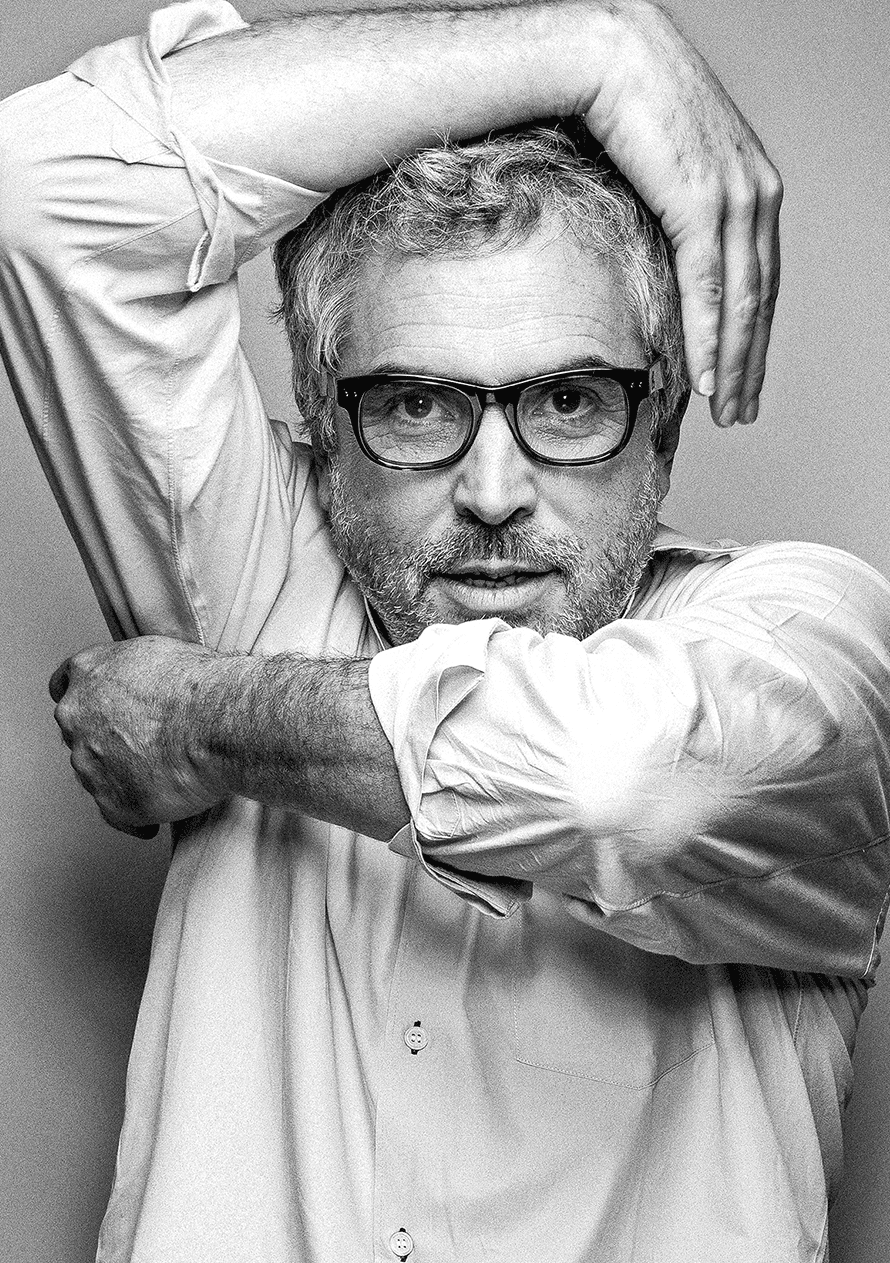
While writer J. J. Abrams called him “Master of the Universe”, Cuarón described himself as a “film worker” and as such continued to build stories, until the night of the 91st edition of the Academy Awards in 2019, when Roma became the first Mexican film to win the Best Foreign Film category and he became the first director of a foreign film to win the Best Director award.
Considered a masterpiece, Roma transcended its multiple nominations and awards to become a cultural phenomenon that served to promote the creation of the first Bill of Rights for domestic workers, in the United States, and in Mexico.
In addition, its protagonist, Yalitza Aparicio became the first Mexican indigenous actress nominated for an Academy Award in the category of Best Actress. Her image has traveled the world, turning her into a media phenomenon that is breaking down stereotypes and has shed light on the importance of valuing indigenous communities and respect for their language.
El Chavo del Ocho
“El Chavo del Ocho” is one of the most influential and popular television series in Latin America. Created by actor, writer, producer and musical composer, Roberto Gómez Bolaños, better known as Chespirito, it was broadcasted for the first time on June 20, 1971. They named it after channel 8, the signal where it aired initially, from Televisión Independiente de México, directed at that time by Joaquín Vargas Gómez, before it was incorporated into Televisa.
The program remained on the air for 20 consecutive years, during which its characters El Chavo —Roberto Gómez Bolaños—, La Chilindrina —María Antonieta de las Nieves—, Don Ramón —Ramón Valdés—, Doña Florinda —Florinda Meza—, Professor Jirafales —Rubén Aguirre—, Mr. Barriga —Edgar Vivar—, Quico —Carlos Villagrán—, La Bruja del 71 —Angelines Fernández— and Jaimito, the Postman —Raúl “Chato” Padilla—, lived the gifts and misfortunes within a tenement. Some of its iconic phrases such as “It was accidentally on purpose” and “They have no patience for me”, among many others, were rooted in the Latin American culture.
It is estimated that at its peak an average of 350 million viewers a week watched it. It was dubbed into more than 50 languages and reached countries such as China, Japan, Greece, Morocco and Thailand. The repetitions of its original episodes and the version of “The Animated Chavo” continue to be aired in over 20 countries.

Considered one of the most beautiful women in the world, actress María Félix (Álamos, Sonora, 1914- Mexico City, 2002) always stood out for her impressive personality on and off the big screen.
She debuted in the film The Rock of Souls (1942), which marked the beginning of a successful film career that included 47 films shot in Mexico, Spain, Italy, France and Argentina, among which Tizoc (1957), La bandida (1963) and Doña Bárbara (1943) —for which she would always be remembered as La Doña— are some of the most remarkable.
Some people claim that the close up shot was invented with cinematographer Gabriel Figueroa’s famous approach into her eyes in the film Enamorada (1946).
The memory of the great Mexican film diva is still alive, immortalized in the seventh art, in her controversial interviews and in music, through song “María Bonita”, composed by Agustín Lara.
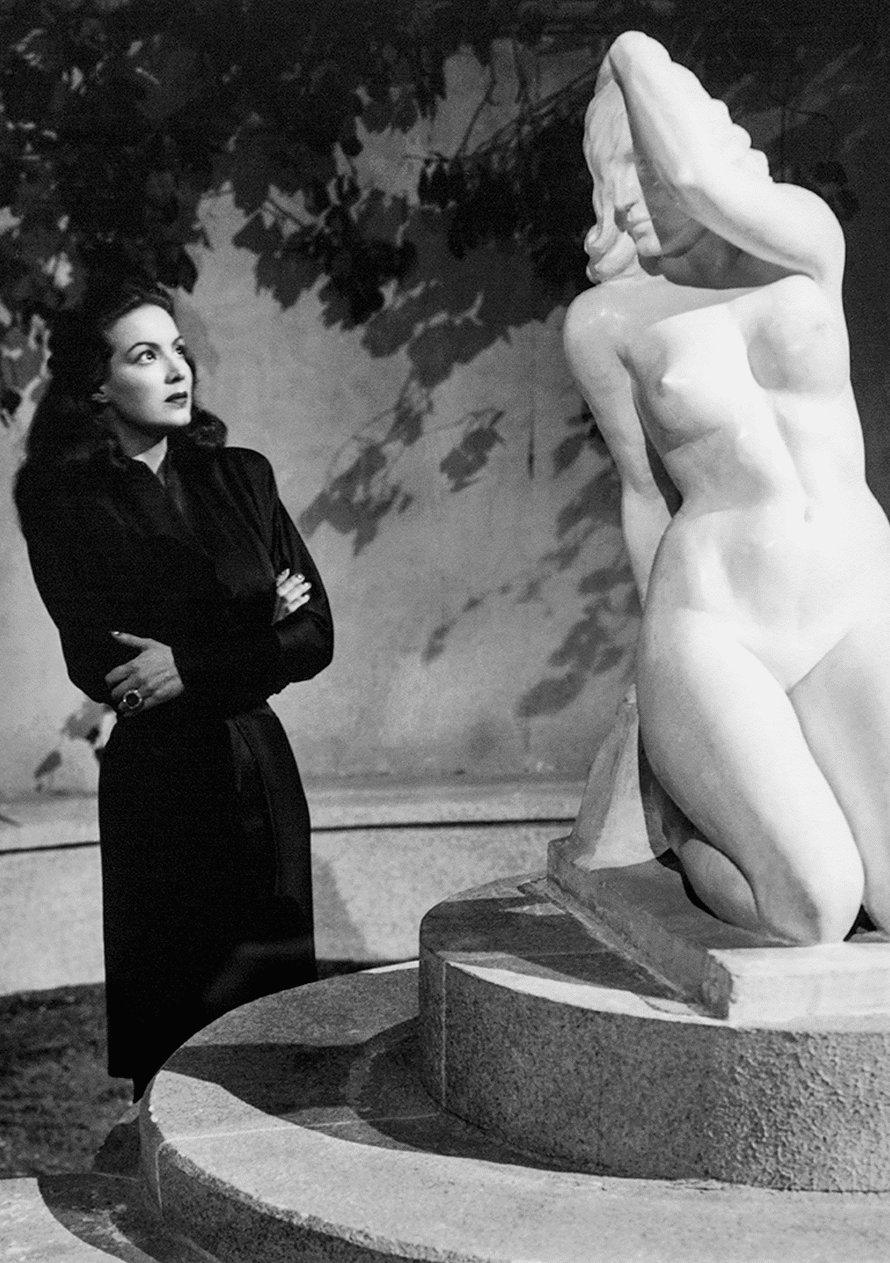
Rooted in the post-revolutionary nationalist culture, Emilio Fernández Romo (Mineral del Hondo, Coahuila, 1904-Mexico City, 1986), better known as “El Indio”, established himself as one of the most significant filmmakers of the Golden Age of Mexican cinema. He used to state without hesitation: “There is only one Mexico, the one that I invented”.
From a very young age he enrolled in the troops of the delahuertista rebellion that fought against the government of Álvaro Obregón. He was imprisoned, but not for long, because he managed to flee and reach the United States.
During his exile he lived in Los Angeles, where he worked as an extra and stand-in for stars in Hollywood. It is said that during this time he posed as a model for the Oscar statuette at the invitation of his friend Dolores del Río, who considered that his physique was ideal for the sculpture that her husband, art director Cedric Gibbons, had been commissioned to work on.
Upon his return to Mexico and influenced by Sergei Eisenstein, he began a film career that included more than 120 films in which he performed as an actor, director and screenwriter, including: María Candelaria and Flor Silvestre, starring Dolores de Río (1943); The Pearl, the first film in Spanish to win a Golden Globe (1945); and Enamorada (1946), one of the best-known films from our national cinema. It was recently presented at the Cannes Film Festival by director Martin Scorsese in a special screening.
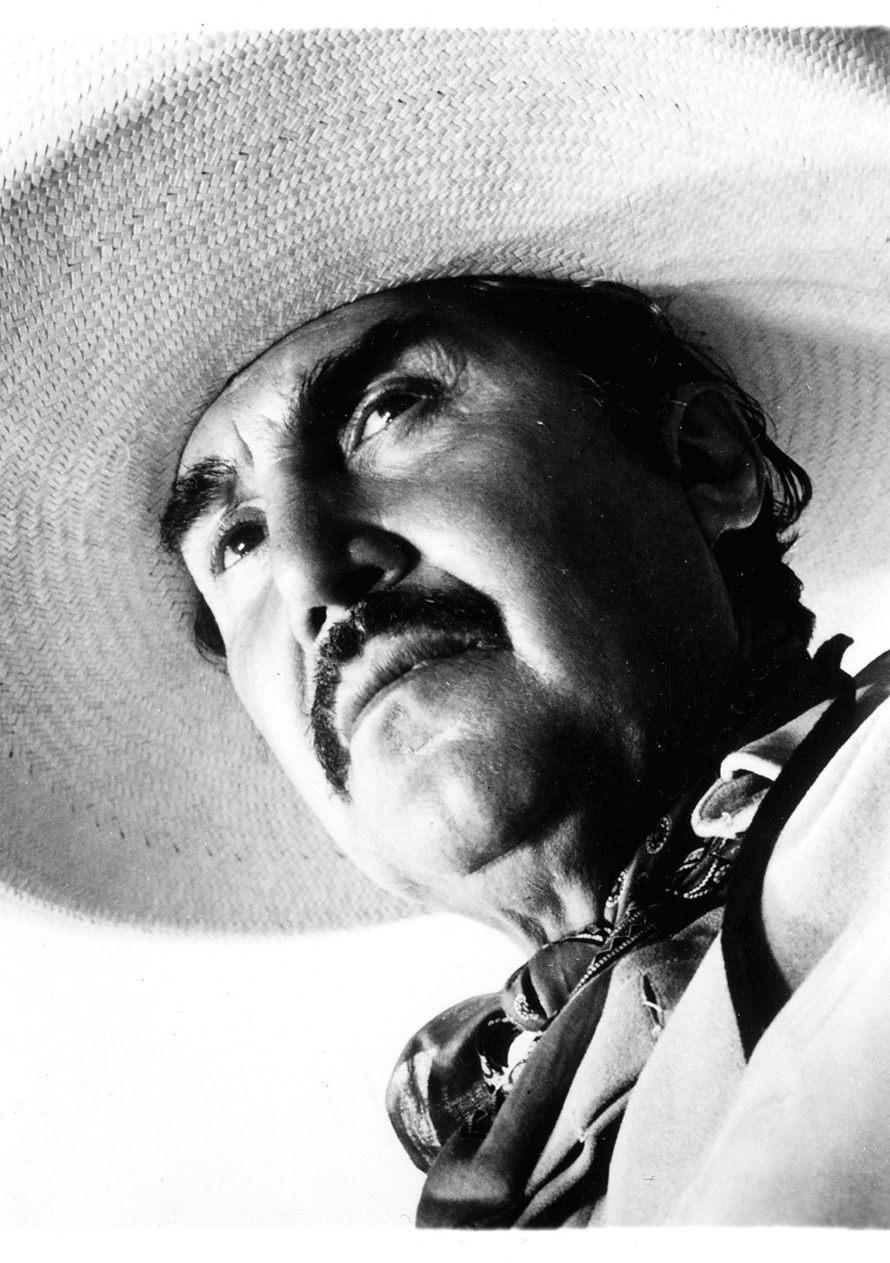
Cinematographer Gabriel Figueroa (Mexico City, 1907-1997) has been granted a glorified status in the Mexican film industry, since his lens composed a chiaroscuro language that defined the idealized image of Mexico providing substance to our memory and identity.
It is said that Diego Rivera named him “the fourth muralist”, because he managed to find on the screen a new media from which “traveling murals” merged their perspective with inspirations taken from the work of José Guadalupe Posada, Leopoldo Méndez, José Clemente Orozco, Tina Modotti, Manuel Álvarez Bravo and other great painters and photographers of the time, representatives of the Taller de Gráfica Popular and of the movement concerned with constructing a nationalistic view through artistic activity.
The first film that credited Figueroa as a co-cinematographer was ¡Que Viva México! (1932), by Sergei Eisenstein, in which he worked with Eduard Tisse, one of his greatest influences.
His filmography includes 210 titles in a career of just over fifty years, during which he collaborated with directors such as “El Indio” Fernández, Luis Buñuel and Roberto Gavaldón, in films that continue to be a reference like María Candelaria (1943), Enamorada (1946), The Young and the Damned (1950), Soledad’s Shawl (1952) and Macario (1960).
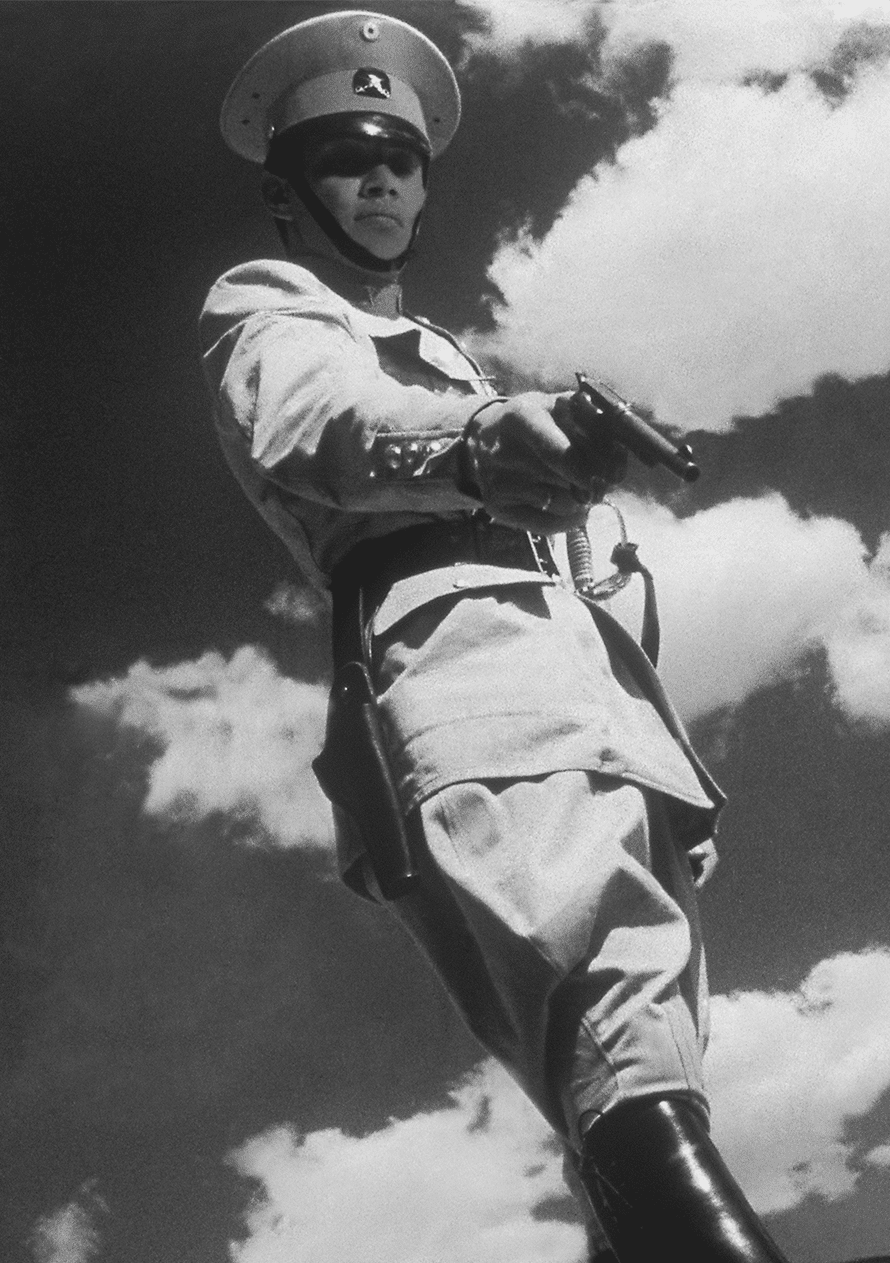

Gael García Bernal (Guadalajara, Jalisco, 1978) was born into a family of actors and debuted on national television at age 11. After gaining popularity as a child actor, he went to London to study drama at the Central School of Speech and Drama, to later become one of the Mexican actors with the most international projection.
His appearance in the short film De tripas corazón, nominated for an Academy Award in 1996, marked the beginning of his film career. Then came feature films such as Amores perros (2000) and Y tu mamá también (2001), which also received nominations from the Academy.
Since then he has starred in over 30 films shot in countries such as France, Spain, United States, Chile and Cuba, among others, in which his performances have earned him awards that include an Ariel for Best Actor for film Amores perros, in 2001; the Male Revelation Marcello Mastroianni Award —shared with actor Diego Luna— for his work in Y tu mamá también; the Revelation of the Year Award for his interpretation of song Quiero que me quieras at the Oye Awards; a Silver Mayahuel in 2009 for his career achievements; and Best Performance by an Actor in a Television Series, Musical or Comedy for his role in Mozart in the Jungle, in 2016.
He is also a producer, scriptwriter and director and is also known for his activism. He was appointed ambassador of the Latino Commission on AIDS campaign in the city of New York for his work and support to the community.

With his debut film Amores perros (2000), Alejandro González Iñárritu (Mexico City, 1963) surprised both locals and foreigners by revealing himself as a director capable of portraying the harshness and drama of Mexican reality.
Until then, his career had only been linked to commercial radio and advertising campaigns. Although he kept his distance from the intellectual film circle, he had been preparing to make his big debut for years.
The film, with a plot of intertwined stories —written by Guillermo Arriaga— won eleven Ariel awards, a BAFTA Award and the Cannes Film Festival Critics’ Award, as well as being nominated for an Academy Award for Best Foreign Film.
This success launched “El Negro” —as his friends know him— into international stardom. He began working with the Hollywood elite and stood out as a “director of few films, but many good choices”.
With films like Babel (2005), Biutiful (2010), Birdman (2014), The Revenant (2015), and Flesh and Sand (2017) he has been collecting awards and recognition within the industry and has taken home five Academy Awards, four Golden Globes and three BAFTA Awards, among others. In 2019 he was president of the Jury of the Cannes Film Festival, becoming the second Latin American to have the honor.

Salma Hayek (Coatzacoalcos, Veracruz, 1966) has earned a reputation as one of the most influential Latin women in world cinema. After starting her career in Mexico as a soap opera actress, in 1995 she made her way onto U. S. screens with film Desperado, directed by Robert Rodríguez.
After several roles in films like From Dusk Till Dawn (1996) or Four Rooms (1995), she became the archetype of the sensual and voluptuous Latin actress of Hollywood. However, while this took place, Salma was already working on the most ambitious project of her career: Frida.
For years, she overcame all kinds of obstacles to interpret the Mexican painter, acquiring the rights to use the work of Frida Kahlo, and anticipating the refusal of producers who did not cast her in the film for not being considered a big enough “star”, which led to the creation of Ventanarosa, her own production company.
Frida premiered in 2002 with Salma as producer and lead actress; the film was nominated for several Academy Awards, winning Best Original Score and Best Makeup. Since then, her career as an actress, producer and director has matured.As an activist, in 2005, she spoke before the United States Congress on the fight against machismo and domestic violence suffered by women in Latin America.
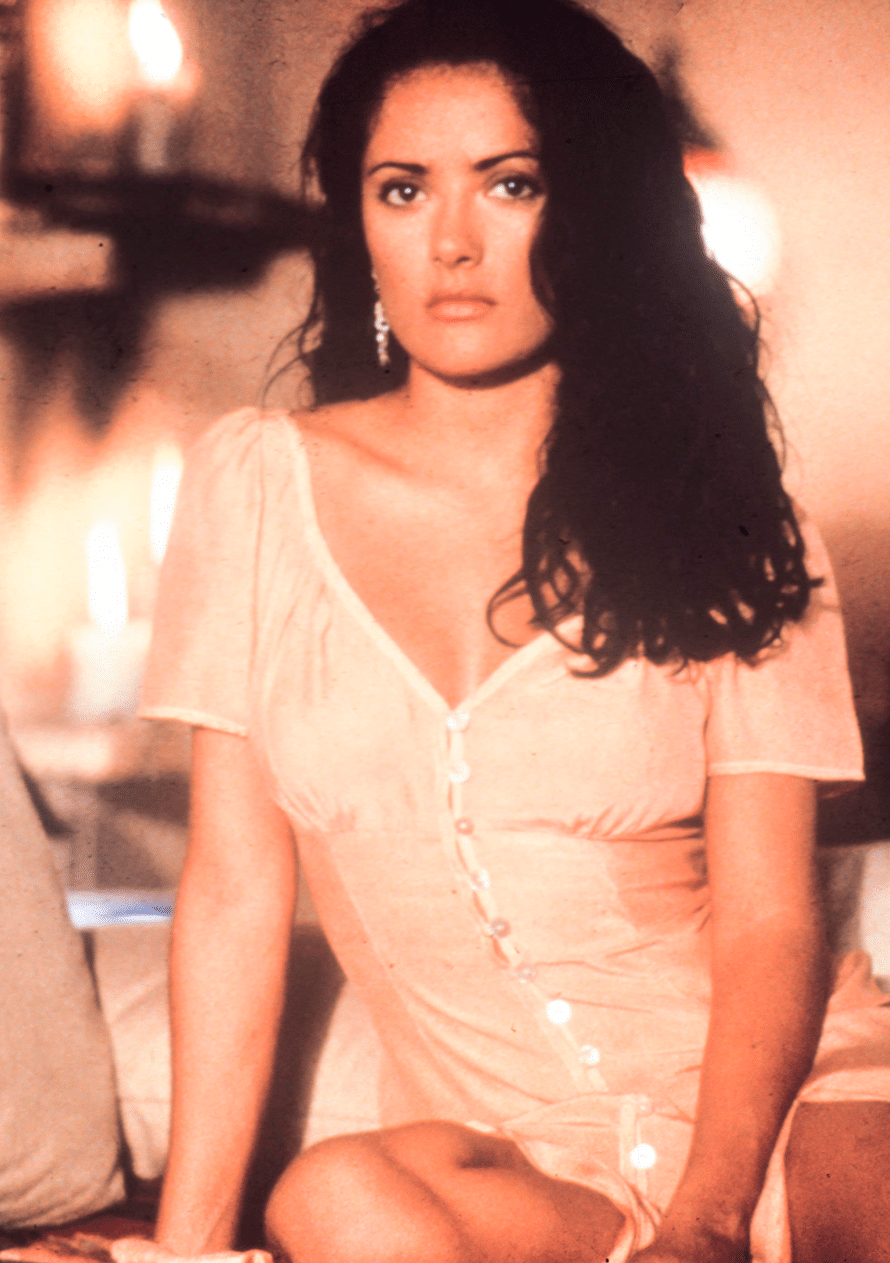
Much more than an actor, singer or public figure, Pedro Infante (Mazatlán, Sinaloa, 1917-Mérida, Yucatán, 1957) is celebrated as a national emblem, an icon of a golden age installed in the collective imaginary that for decades contributed to the construction of Mexicanness.
He recorded more than 300 songs and his face occupied the big screen in over 60 films, in which he stood out for his great charisma and the quality of his performances —sincere and touching—, which ultimately have made it difficult to separate the actor from his characters, turning him into the canon of the Mexican man: chatty, hardworking, ethical, chaste, good son, flirtatious, but loyal.
His tragic and premature death, gave him the quality of a myth that is still alive thanks to films such as the trilogy We the Poor (1948), You the Rich (1948) and Pepe el Toro (1953), Los tres García (1947), Full Speed Ahead (1951), El inocente (1956) and Tizoc (1957). He was nominated for an Ariel, won a Golden Globe and the Berlin International Film Festival’s Silver Bear for Best Actor.


When she was just 15 years old, the talent of María Cristina Jurado García (Guadalajara, Jalisco, 1924- Cuernavaca, Morelos, 2002) caught the attention of director Emilio “El Indio” Fernández, who offered her a role in his debut feature film La isla de la pasión, but the teenager did not have her parents’ permission to act, so she had to reject the part.
Later, in 1943, still without permission, she debuted in the film No matarás, directed by Chano Urueta, and became known as Katy Jurado. By 1951 she had already moved to Hollywood, where she worked as a film columnist, radio journalist and bullfighting critic.
It was actually in a bullfight where she met actor John Wayne and filmmaker Budd Boetticher, who invited her to join the cast of film The Bullfighter and the Lady (1951). Thus began her successful career, becoming a regular character in Western films of the time. Overtime, she was offered more complex roles, and she specialized in playing perverse and seductive women. She worked in over 60 films in which she shared credits with figures such as Charlton Heston, Marlon Brando, Grace Kelly and Elvis Presley.
She was the first Latin American actress to win a Golden Globe, for her performance in the film High Noon (1952), and the first to be nominated for an Academy Award in the category of Best Supporting Actress for her performance in Broken Lance (1954), opening the doors of the movie mecca to her successors.
Better known as “El Chivo”, Emmanuel Lubezki (Mexico City, 1964) has been listed as one of the best cinematographers of recent times, a miracle worker capable of mastering light and shadows to create dreamlike, fantasy, dystopian worlds or even to portray the sun turning between sunset and nightfall.
Self-designated “image psychiatrist”, he discovered his love for photography as a child, through the lens of a Kodak Instamatic 54x, with which he documented countless children’s outings. Later, he studied at the University Center for Film Studies (CUEC).
Since his debut in Será por eso que la quiero tanto, directed by Carlos Markovich in 1985, his career continued to thrive, as director of cinematography of over 40 feature films including iconic movies such as Sólo con tu pareja (1991), Like Water for Chocolate (1992), Y tu mamá también (2001), The Little Princess (1995), Sleepy Hollow (1999) and The Tree of Life (2011), and the films that established him as a genius: Gravity (2013), Birdman (2014) and The Revenant (2015).
He has countless nominations in the most relevant film awards in the world, and has received four BAFTA Awards and three Academy Awards (2013 to 2015).

Son of set designer Alejandro Luna and costume designer Fiona Alexander, one could say that Diego Luna (Mexico City, 1979) was born in the theater. He came into the world during the theatrical season in which his parents where working, shortly after Patricia Bernal, actress in the same project, gave birth to Gael García Bernal during rehearsals. Over time, their growing friendship became artistic complicity.
Diego grew up backstage and debuted as an actor at age six in a play directed by Luis de Tavira. Later he continued his career in television and laid the foundations for his film career thanks to his performance in Y tu mamá también, for which he received the Male Revelation Marcello Mastroianni Award (2001) —shared with Gael García Bernal.
His “Charolastra” character launched him to fame and since then he has worked on over 30 films shot in Mexico, the United States and Spain, including Frida (2002), The Terminal (2004) —directed by Steven Spielberg— and Rogue One (2016).
In Mexico, he has reactivated theater production, and is one of the founding partners of the Canana production company and Ambulante documentary film festival. He has also made an incursion into film direction, first with Abel (2010), then with César Chávez (2014) —which tells the story of the Mexican-American peasant leader who fought for civil rights of workers and immigrants in southern United States in the mid-20th century— and Mr. Pig (2016), starring Danny Glover, which premiered at the Sundance Film Festival.

Rodrigo Prieto (Mexico City, 1965) is one of the most prominent Mexican cinematographers of his generation, whose work is defined by his constant innovation in technique and by the development of a versatile and discreet visual world.
His talent for transitioning between genres and styles has allowed him to decipher the vision of directors as different from each other as Francis Lawrence, Pedro Almodóvar, Curtis Hanson or Spike Lee.
He has taken part in more than thirty feature films, among which are Broken Embraces (2009) by Pedro Almodóvar, and The Wolf of Wall Street (2013) by Martin Scorsese. His achievement in cinematography earned him nominations for an Academy Award for Brokeback Mountain (2006) directed by Ang Lee, and for Silence (2017) by Martin Scorsese. He was also a BAFTA nominee for Babel (2006) by Alejandro González Iñárritu.
Rodrigo Prieto, Guillermo Navarro and Emmanuel Lubezki belong to a group of outstanding cinematographers who redefined Mexican cinema in the 1990s and who, over the years, have conso- lidated their careers within world cinema with unmatched styles.


Son of a camp follower and an Irishman who took part in the Revolution, Antonio Rodolfo Quinn Oaxaca (1915–2001) was born in Chihuahua, next to the millstone behind a kitchen. It was a time of rifles and war cries when his mother felt the first labor pains while grinding maize.
From an early age he migrated to the United States and began working at age five. He sold newspapers, he polished shoes, he was a construction worker, boxer and even a preacher. Becoming an actor, known simply as Anthony Quinn, was not among his plans. He discovered his vocation while studying architecture.
At 19 years old, he appeared in the office of architect Frank Lloyd Wright, who had granted him a scholarship and noticed that the young man had a frenulum on his tongue, so he sent him to a doctor who corrected the problem. The rehabilitation included vocal coaching taught at a drama school. This is how he went from playing characters in school plays to being an extra in films and then becoming one of the most prominent actors of his generation.
He took part in more than 150 films filmed in Hollywood, Italy, France, United Kingdom, Mexico, South Africa, Spain, Canada, Germany and Brazil. He won his first Academy Award in 1952, as Best Supporting Actor in film Viva Zapata! and in 1956, for his performance in Lust for Life.

“I did not consider cinema, cinema considered me”, said Dolores del Río (1904–1983), a mythical figure in the Latin American entertainment industry, who left an indelible mark on the history of film.
She was born in Durango and, like all the daughters of her family, at a very young age she married a businessman who lost his fortune in the fall of the cotton market. With no money and no idea of how to recover her status, she received a signal: she met film director Edwin Carewe by chance, who told her that she had the potential to become a female version of Rodolfo Valentino.
The young woman did not know a thing about acting nor did she speak English, but despite that she debuted in 1925 starting a career that accumulated leading roles in dozens of silent and sound films in the United States, Mexico, Spain, Italy and Greece, among which are Ramona (1928), Flor Silvestre and María Candelaria (1943).
She was considered the second most beautiful woman in Hollywood —only after Greta Garbo— and her presence inspired thousands of women who imitated her style. She was the first to paint her lips without a heart shape, as well as a pioneer in the use of the two-piece swimsuit.
Dolores opened the doors of international film to her colleagues, actors and directors, whom she supported for years with resources and contacts for them to seek luck outside Mexico. She was the first female member of the jury of the Cannes Film Festival, and co-founder of the Society for the Protection of the Artistic Treasures of Mexico.
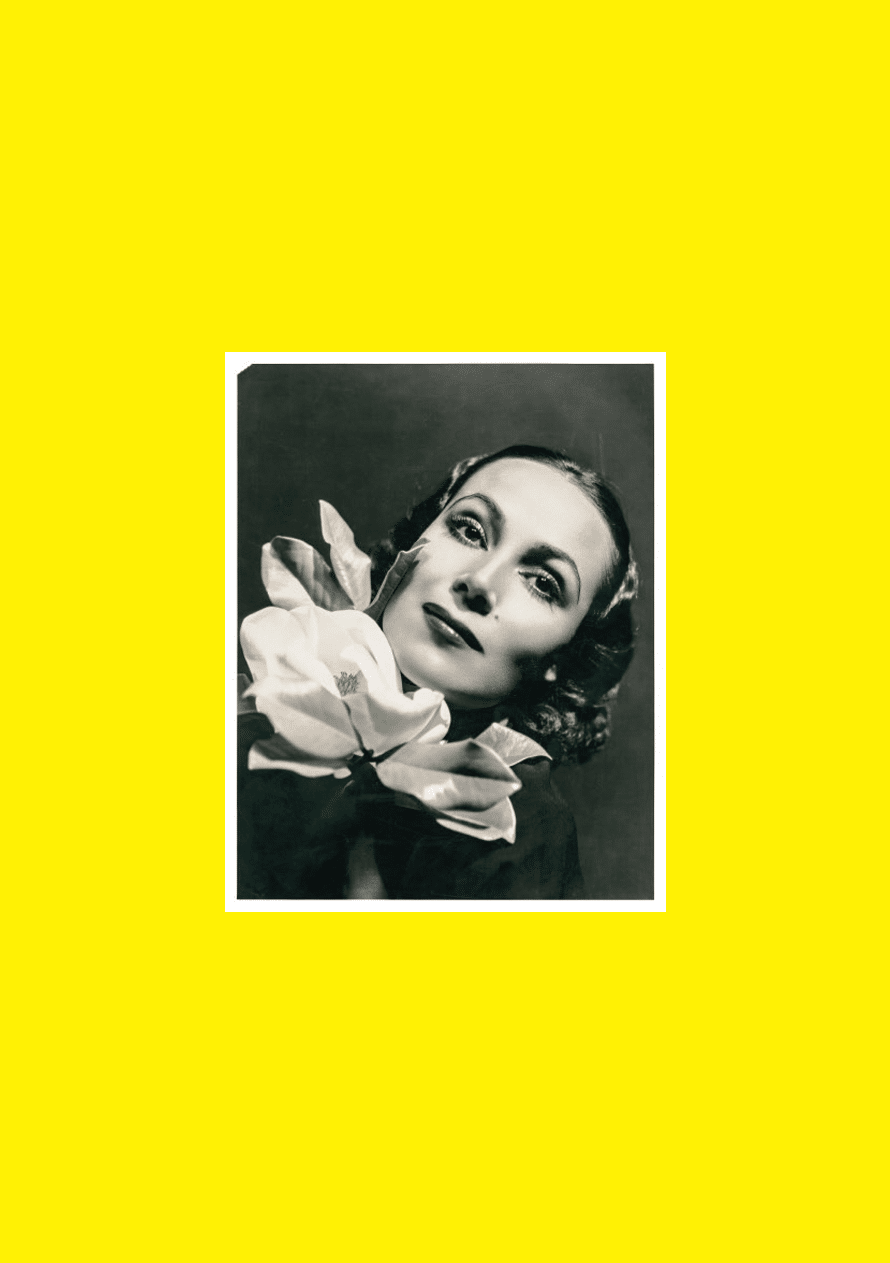

Wrestling is one of the most representative cultural manifestations of the country. A representation of the eternal struggle between good and evil: those that use clean wrestling techniques (técnicos) against those that use chicanery (rudos), ethics against illegality reflecting Mexican idiosyncrasy.
In the wrestling congregation a “Saint” of great veneration was proclaimed, the only flesh-and-blood superhero in the world: The Silver-Masked.
Behind the mask, which filled arenas, was Rodolfo Guzmán Huerta (1917–1984), born in Tu-lancingo, Hidalgo, but raised in the rough neighborhood of Tepito in Mexico City. His debut on the mat was in 1934 and after several falls —with no time limit— endless booing and discarded names such as Hombre Rojo, Murciélago II and Demonio Negro, in 1942 he appeared at the Arena México wearing the silver mask and the name that turned him into a legend.
The character transcended the wrestling mat to enter the world of comics and star in about fifty films —between 1958 and 1980— in which he fought against murderers, space monsters, vampire women and international gangsters. He is an icon of Mexican popular culture.
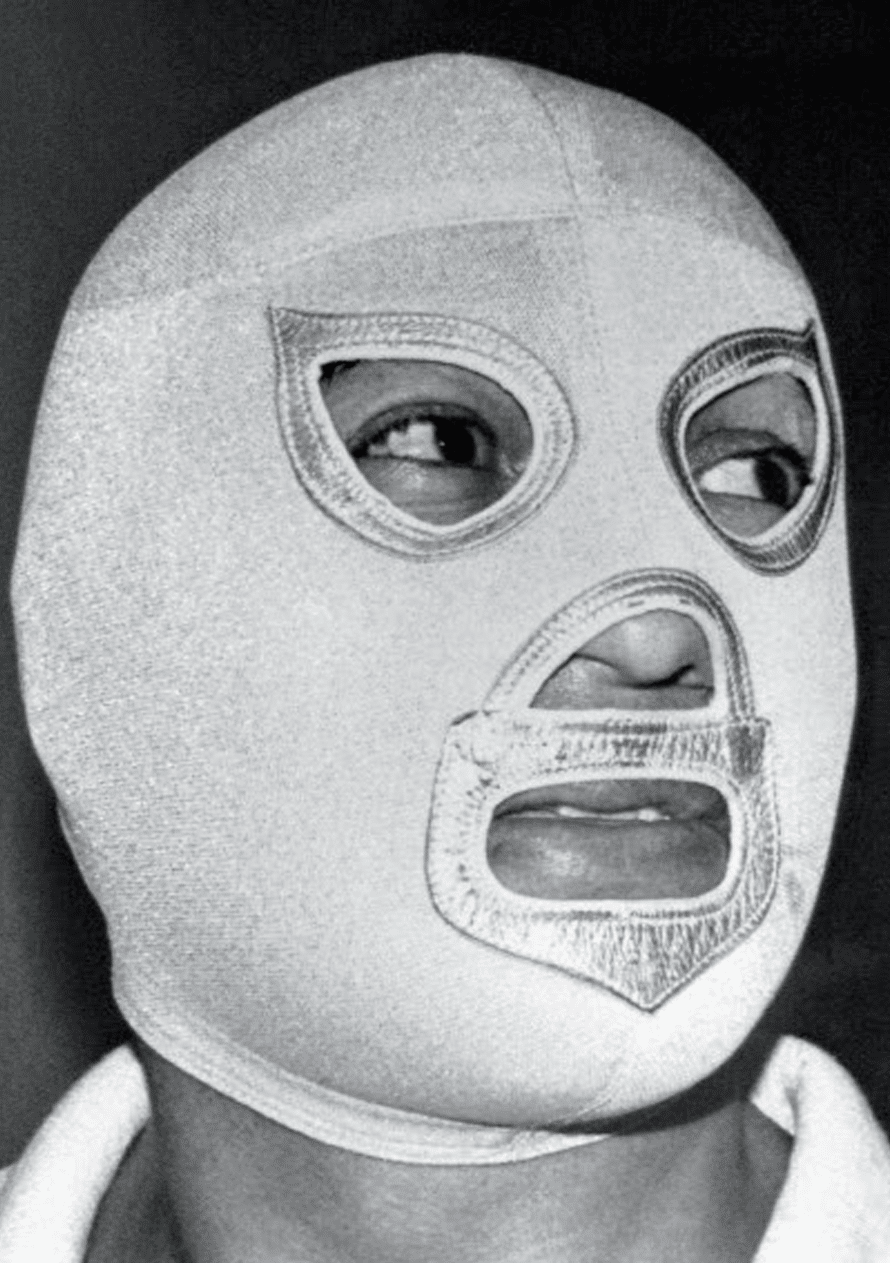
During a press conference in 2018, after receiving the Golden Globe for Best Director in his movie The Shape of Water, Guillermo del Toro was asked how he was able to see the dark side of human nature and at the same time be a cheerful and loving person. “Because I am Mexican”, he replied. “No one loves life more than we do, because we are so conscious about death”.
With his debut film, Cronos (1993), Del Toro showed that there was much more in Mexico than a fatalistic gaze in films and he opened a window to the stories of endearing monsters and fantastic worlds that have marked his career. The Devil’s Backbone (2001), Pan’s Labyrinth (2006) and Hellboy (2004), are just a few of the dozens of films that have established him as a reference of current cinema.
But in addition to his many awards, “Totoro-san” —the eternal child who once made a pact with his monsters to redeem them— has also become one of the most beloved Mexicans. A titan willing to support all kinds of causes: from granting scholarships, to helping the children of the Mexican Mathematics Society team to attend the Mathematical Olympiad in South Africa and winning.He is convinced that “every time we show Mexican exports, things like science, art and culture, it generates an important discourse in the world and helps us remember where we are from”.54


